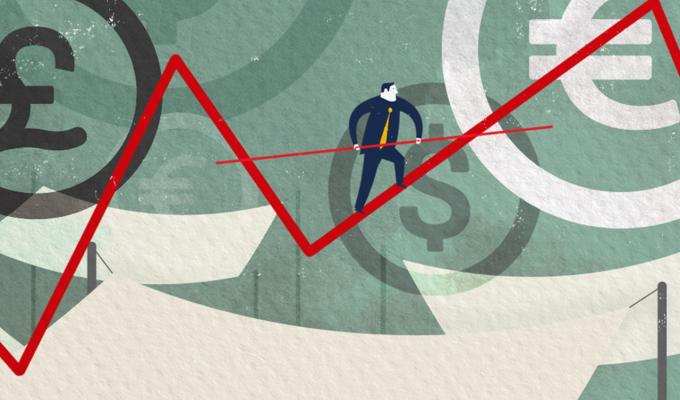Thousands of companies, all over the world, are in need of increasing the information offered to their stakeholders due to new legislation related to sustainability, such as for example, the European Directive on the Disclosure of Non-Financial and Diversity Information, which is now obligatory for the 2017 fiscal year.
Nevertheless, in Latin America, according to a global study by KPMG, 81% of the 100 largest companies are already reporting social and environmental impacts in its sustainability reports, an increase from 74% in 2015. This advance, which has primarily been led by stock market investors in many countries, looks for businesses to communicate transparency in their operations. However, how can we tackle the sustainability puzzle in our own business? How can we measure it, and essentially, communicate it to our stakeholders?
Nowadays, sustainability is understood as the capacity of a company to create value for its stakeholders, proactively managing risks and strategic opportunities in environmental, social and economic dimensions. This definition transcends from the more traditional concept of Corporate Social Responsibility and includes a wider spectrum of environmental issues (such as water, energy, and emissions), economic issues (such as innovation, corporate governance, and antitrust policy), and social issues (such as occupational health and safety, personal development, and Human Rights), all depending on the specific type of business.
Many companies have spent years developing initiatives for these issues, but how can we ensure that these actions are really contributing to a sustainable business? The answer, as with any management system, is the establishment and measurement of objectives.
Why do we need reporting standards?
Although the business sector has not typically been a pioneer in sustainability, in recent years more companies have joined the efforts of the United Nations and other players, such as governments, NGOs, and Civil Societies, to develop the Millennium Development Goals (2000) and Sustainable Development Goals (2015). These initiatives establish clear goals to achieve sustainable development. The UN also created the UN Global Compact (2000) for companies to commit to working toward responsible and sustainable businesses.
When companies comply with initiatives such as the Global Compact, one of the main requirements is the reporting of its operations. This stems from the need for companies to be more transparent with their stakeholders, to be open about the disclosure of clear information, regulations, plans, processes, and operations. Furthermore, their top management must act visibly, predictably and understandably to promote participation and accountability, and allow third parties to easily perceive what actions are being performed.
While there are numerous measurement standards and guides to report sustainability information, one of the most used and updated is the Global Reporting Initiative (GRI). The GRI proposes a common framework which helps companies to generate their sustainability reports with an integrated view of their impacts. Under these standards, companies can communicate their performance, as well as propose and follow up on the objectives they have set. Finally, they are used to guarantee the comparability, quality and pertinence of the information.
Recommendations for a good report
If you, or your company are about to start or are in the process or generating a report, the following recommendations will help you on your path to sustainability:
- The report is a consequence of strategy: It may sound obvious, but reality usually shows that a company’s sudden interest in sustainability starts with the report. First we need to take a step back and analyze the company’s current strategy, then take a look at it from the point of view of sustainability, which means mapping out the risks and opportunities of the business model all along the value chain, in its social, economic and environmental dimensions.
- Include top management: The process of the report, and in general of the sustainability strategy, works better when there is visible conviction from the head of the organization. This does not mean that the CEO needs to be involved in every step of the process, but they and their executive team should be one of the last filters of the information disclosed to the stakeholders, as it will also become public information.
- Prioritize what you are going to disclose: A Materiality Analysis process is key to select the content that is most aligned with the stakeholders’ expectations, the sector trends and the company strategy. This process is normally carried out by a third party to avoid any bias.
- Limit yourself to what is relevant for your company: There are many standards, indicators and indexes used to measure corporate sustainability, but here also less is more. Ask yourself: What standards are the most critical for my company? Do they generate value? Which ones can I manage, or am I able to use? Start off little by little, but well done, making sure about the contributions to improving the company’s performance.
- Reporting is a process of continual improvement: At first some companies tend to feel overwhelmed by the amount of information demanded from them, but just like any process, it is based on learning and constant improvement. If the company does not have all the relevant information, that just means that it needs to adjust its information collection process.
- Sustainability Culture: It is about adopting sustainability habits, attitudes and behaviors in the day-to-day management of the organization. Once people understand the concept, its benefits and the contribution it makes to company performance, the reporting process will become much easier. Invest in training and communicate the sustainability strategy in simple terms to the rest of your company.
- A Positive/Negative Balance: Reporting is an exercise focused specifically on transparency and accountability in front of stakeholders. Thus, you must present the positive and negative aspects of the value chain in a clear and balanced manner. Avoid just showing the good parts, as this defeats the main objective of the process. Stakeholders do not generally focus on what the company did or is doing wrong, they want to know how it was resolved or will be handled going forward.
- Match individual performance to corporate performance: Many companies are now relating their sustainability objectives with their variable employee compensation systems. This undoubtedly facilitates the management and reporting of sustainability. Working closely with Human Resources is key for this type of implementation.
- Sustainable Development Goals: Once the main material impacts and issues have been identified within a company, indicators and goals will be integrated in relation to the SDG. This fundamentally contributes to the overall strengthening of the company’s relationships with its stakeholders and its contribution to the sustainable development of the region in which it operates.
- Focus on the value chain as a whole: Although sustainability reporting is a process of continuous improvement, the entire value chain of the business model must be taken into consideration. This basically means that it is not enough to just manage issues within the company. You need to go further and manage the risks associated to customers, suppliers, contractors, communities, and any other stakeholders that may be affected by the activities of the business.
Corporate sustainability is a response to a new economic world. Sustainability Reporting is advancing rapidly and is becoming a vital tool in management and transparency with stakeholders, and particularly with investors. Initiatives such as the Dow Jones Sustainability Indexes (DJSI), Task Force on Climate-related Financial Disclosures (TCFD), CDP and Sustainability Accounting Standards Board (SASB) are clear examples of how investors are becoming increasingly interested in sustainability issues and how these issues are being translated into financial language. Therefore, companies are now being challenged to take a step backward, to analyze their Business Model, their risks and opportunities in relation to social, environmental and economic issues, as well as to communicate their management of these issues in a proactive and transparent manner.




